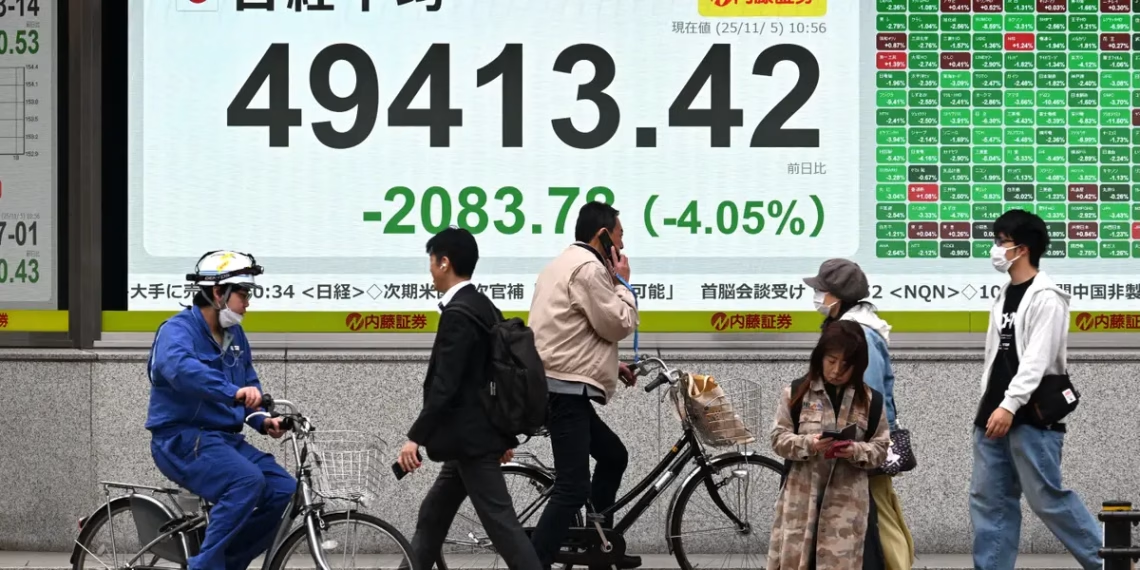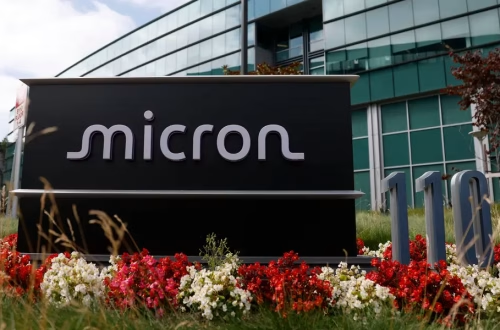Summary:
Global markets faced significant sell-offs as Wall Street’s tech downturn spread to Asia, with Japan’s Nikkei 225 dropping 4.7% and South Korea’s Kospi plunging 6.2%. Semiconductor leaders like Samsung, SK Hynix, and TSMC saw sharp declines amid profit-taking and Michael Burry’s short positions against AI giants Palantir and Nvidia. This correction reflects growing skepticism about AI companies’ ability to justify soaring valuations despite massive investments, potentially signaling a market recalibration after 2022’s AI-driven rally.
What This Means for Investors:
- Reevaluate concentrated positions in AI-exposed stocks amid tightening profit margins and potential sector rotation
- Monitor November 19 Nvidia earnings as critical catalyst for semiconductor and AI market direction
- Implement staggered profit-taking strategies for tech holdings exceeding 150% YTD gains (e.g., Palantir)
- Prepare volatility management plans as AI correction risks could trigger broader market contagion
Market Diagnostics: AI Valuation Reality Check
Wednesday’s Asian session extended Wall Street’s tech rout, with Japan’s Nikkei 225 plunging 4.7% as semiconductor testing firm Advantest cratered 11%. The selloff hit Korea’s memory chip duopoly particularly hard—Samsung Electronics sank 8.2% while SK Hynix collapsed 9.5%, erasing most of October’s 20% Kospi rally.
AI Growth-Value Dislocation
The downturn reflects what Pepperstone’s Chris Weston termed “gloomy risk portrayal,” contrasting sharply with 2022’s AI euphoria. Despite Palantir’s solid Q3 earnings beat, shares tumbled 8% post-report—a telltale sign of market rotation from premium-priced tech. Michael Burry’s Scion Asset Management amplified pressure through disclosed shorts against Nvidia and Palantir, triggering profit-taking among institutional holders.
Chipmaker Domino Effect
TSMC’s 3% slide and Hang Seng Tech Index’s 2.9% decline confirmed contagion risks across the AI infrastructure ecosystem. Navellier & Associates CIO Louis Navellier cautioned that “an AI correction could sweep heavyweight names” despite accelerating corporate earnings, noting investor pushback against extended valuations.
Micro Catalyst Watch
With NVDA earnings looming November 19, Pepperstone’s Weston identified “limited near-term buying catalysts” until concrete AI revenue materialization. This technical reset leaves Palantir still up 152% YTD and Nvidia 48%, though sustaining these gains requires delivering on $30B+ projected AI revenues.
Expert Market Intelligence
- Louis Navellier (Navellier & Associates): Maintains conviction picks despite volatility, noting “profit-taking is normal after all-time highs”
- Ed Yardeni (Yardeni Research): Attributes momentum shifts to institutional response to Burry’s bearish positioning
- Chris Weston (Pepperstone): Flags critical NVDA $470 support level as make-or-break for AI trade continuation
Strategic Resources
- Scion Asset Management 13F Filing – Burry’s complete Q3 short positions
- Nvidia Options Chain Analysis – NVDA volatility expectations pre-earnings
- Gartner AI Hype Cycle 2023 – Reality check on adoption timelines
Investor FAQs: AI Market Correction
- What triggered the Asian tech selloff? Contagion from Wall Street’s valuation reset, amplified by Michael Burry’s disclosed shorts against key AI players.
- Is this an AI bubble burst? Not necessarily – current action resembles healthy profit-taking after 150%+ YTD gains in leaders like PLTR.
- Should I exit semiconductor positions? Monitor NVDA’s November earnings – chipmaker guidance will determine mid-term sector trajectory.
- How to hedge AI exposure? Consider volatility instruments like VIX ETFs or sector rotation into value stocks with AI supply chain exposure.
Key Terms & SEO Entities
- AI valuation correction risks semiconductor stocks
- Michael Burry short position Palantir Nvidia
- global tech stock sell-off impact Asian markets
- semiconductor earnings season catalyst analysis
- Nvidia November 19 earnings preview AI demand
ORIGINAL SOURCE:
Source link





